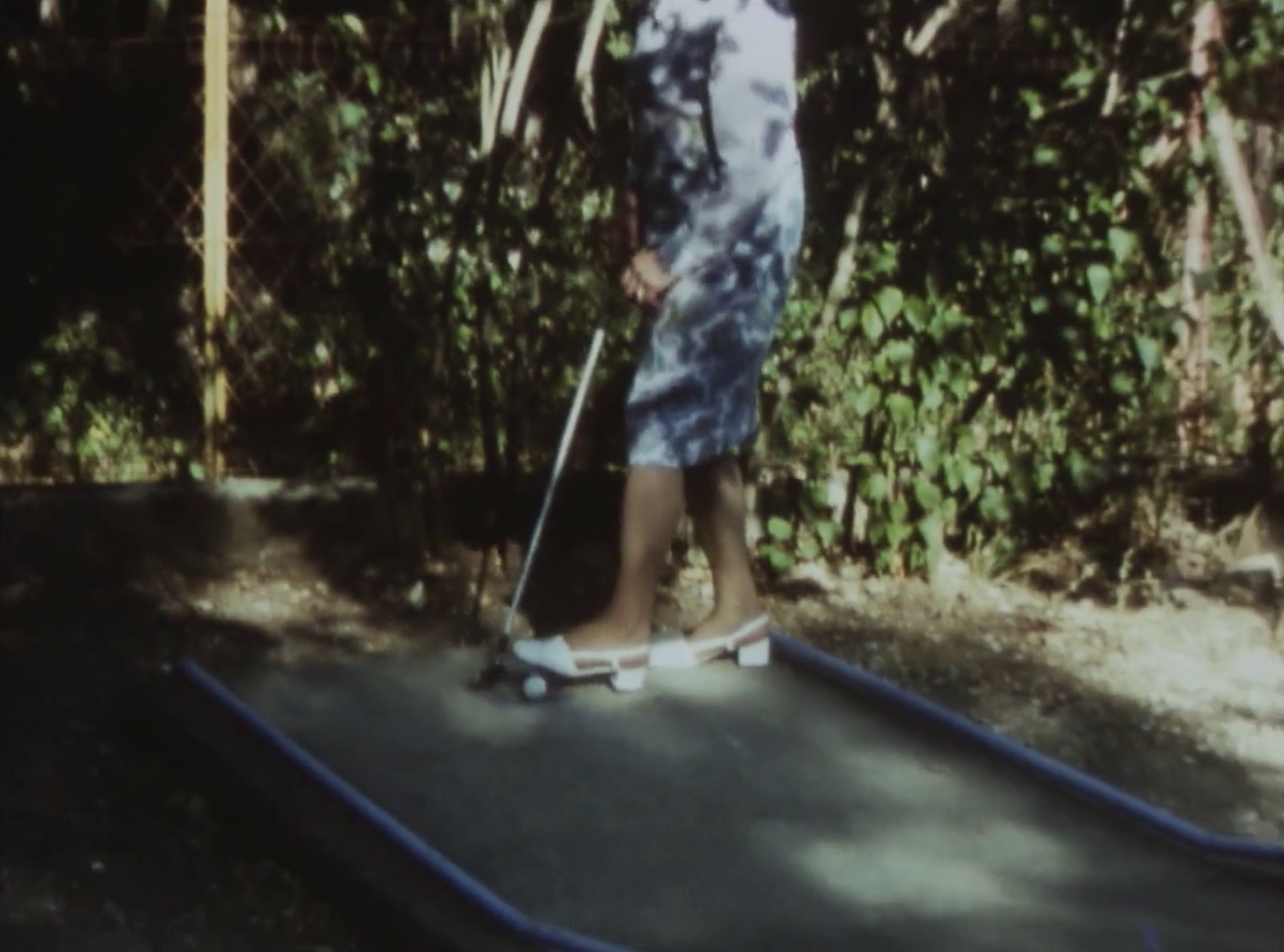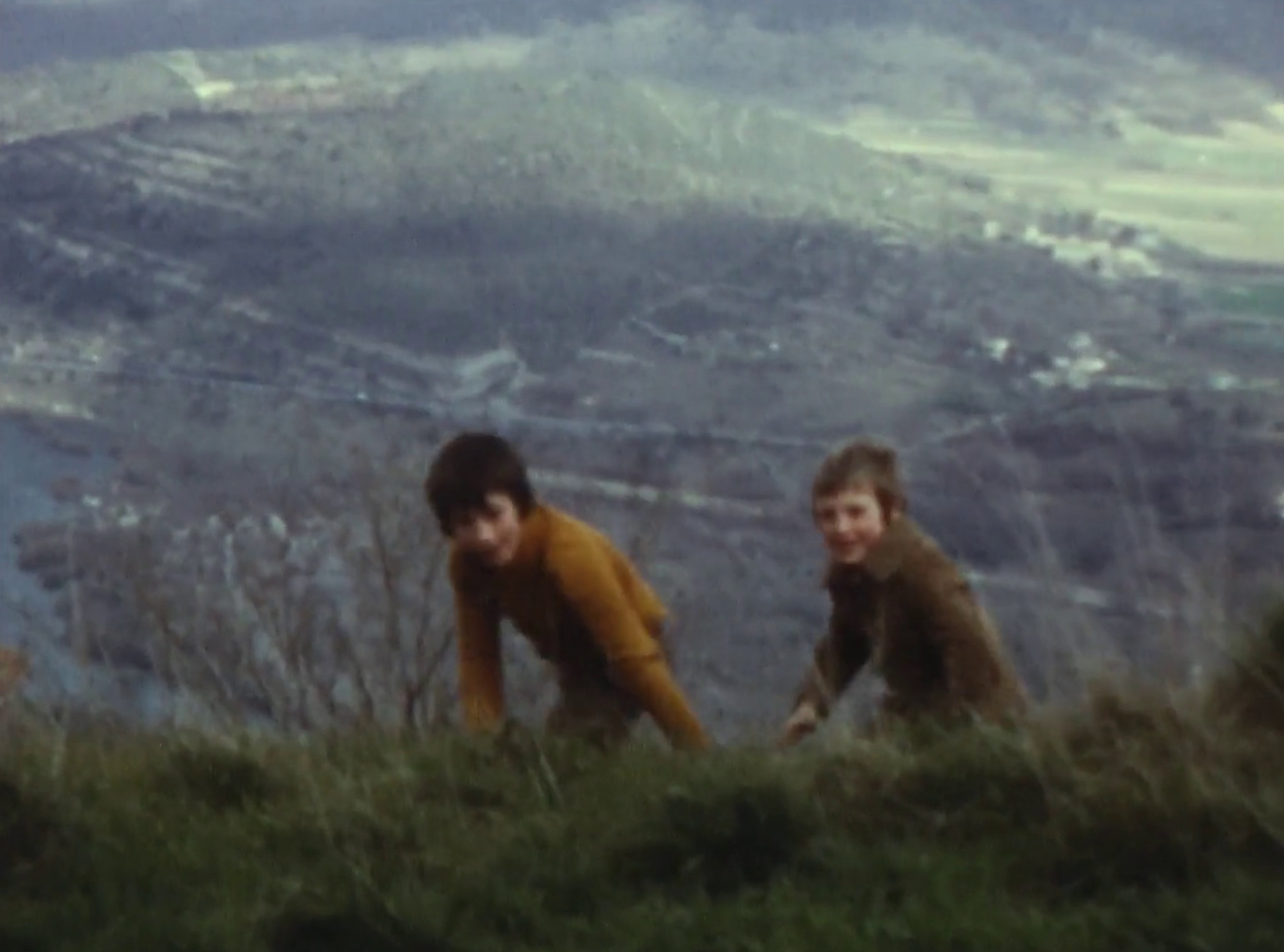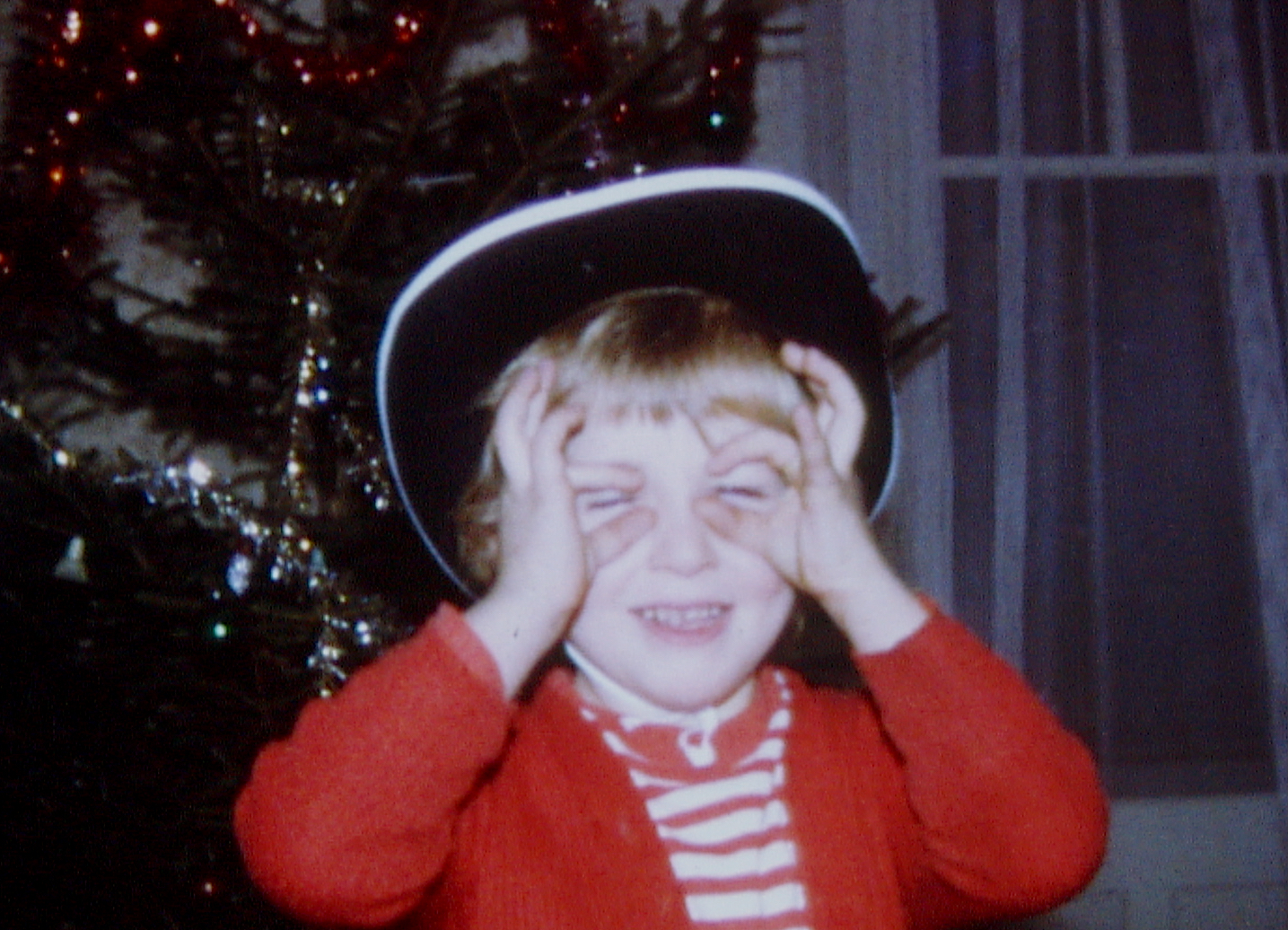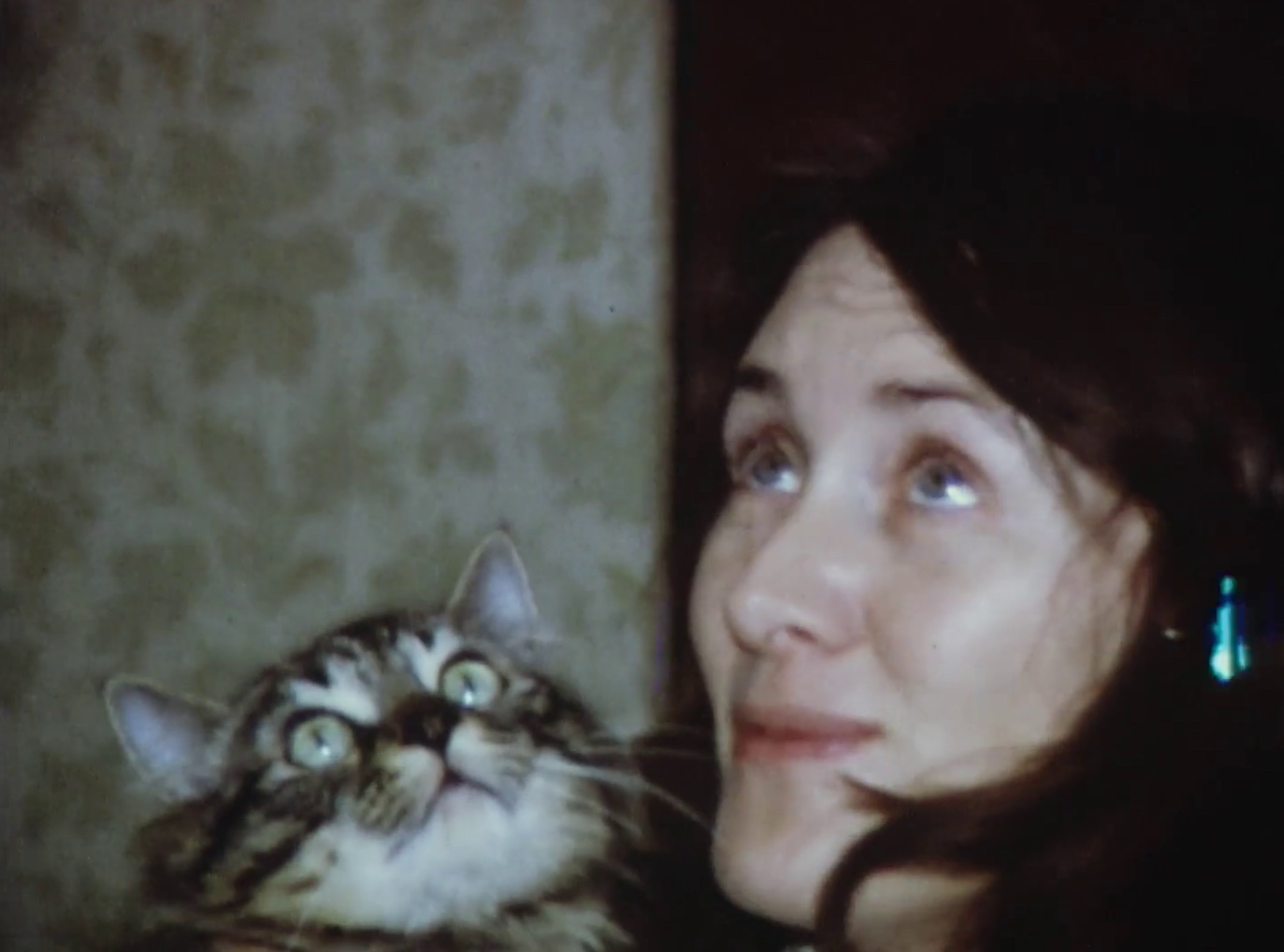In the Golden Light of Memory: On Annie Ernaux and ‘The Super 8 Years’
About once a year, we have a family gathering in our hometown. My sister, who’s taken on the role of our family archivist (being the last one to move out), always pulls out the photo albums and home DVDs – footage from birthday parties, our mother doing our hair, making up beds on the floor for sleepovers, or moments our parents took pride in, seen as echoes of their hard work: dance and piano recitals from another life, school award ceremonies – the achievements of the children of two people who, for a few years during the economic boom of the 2000s, had managed to lift themselves out of the working class with small-time businesses in mohair, wood paneling, and Turkish-made double glazing.
These images aren’t always easy to watch when you try to find yourself in them. The simplest way is to look at them – where possible – with tenderness, or with a sense of gentle ridicule, of misalignment, of a slight awkwardness or anachronism, even in the clumsy aesthetics that no longer belong to us: the poses, the clothes, the smiles, the household objects, and the songs that have since lost all their power and credibility; people dancing, all dressed up but in socks, in the living room. In some clips, we see people who, not long after, were no longer husbands or friends. These are harder to watch together, always demanding a recalibration: emotional updates.
Watching The Super 8 Years (Les Années Super 8) recently at the Elvire Popesco Cinema – a foray into writer Annie Ernaux’s family’s memory – I found myself wondering: how personal is such an archive, and what kind of truth does it hold? What do you do with all these images that essentially show the same thing – the desire to mean something, to leave a trace?
The Super 8 Years, co-directed by Annie Ernaux and David Ernaux-Briot, is a documentary film compiled from silent home videos shot mostly by Philippe Ernaux in the 1970s with a Bell & Howell Super 8 camera. It is a visual biography of the Ernaux family, as well as a reflection on the historical and political context of the time. Covering the years 1972 to 1981, the film blends moments of domestic intimacy and personal travel with historical events in France and beyond, layering social and political dynamics over private life. This very overlay is at the heart of Annie Ernaux’s writing, where personal and collective history are inseparable.

The minimal footage is accompanied by Annie Ernaux’s voice, reading a text she wrote after watching the full archive with her grandchildren – the sons of David Ernaux-Briot – at their request to see Philippe Ernaux. Ernaux has returned often, in works like A Woman’s Story (Une femme) and interviews, to the idea that the essence of writing lies in finding a particular order of words. The text she wrote for The Super 8 Years – “a literary text (…), I don’t know how to make films” (as she stated in a 2023 panel discussion at Cinéma Omnia République) – serves as an axis for the images, while the selection and sequencing of those images were entirely David’s, in an artistic and affective gesture.
Reading Annie Ernaux never gives the impression of voyeurism – unlike with other writers who bare their biographies in detail and make you feel like you’re peeking where you shouldn’t. Ernaux writes intimately without seeming to reveal secrets or confessions.
“To write life (…). Not my life, nor his life, not even a life. Life – with its contents, the same for all of us, though we each experience them individually: the body, education, gender identity, social trajectory, the existence of others, illness, grief. Above all, life as it is continuously changed, destroyed, and renewed by time and history.” (Photojournal, Écrire la vie)
It’s as though you’re looking into a shared experience – does it really feel voyeuristic? It’s not a transgressive act, but a way of recognising your own history in that of others, in the shared condition. The testimonies of unofficial histories – personal or familial – are essential to the intimate gaze into collective experience and memory. They’re not just isolated fragments, but threads woven into a common fabric of memory, part of a time and space that shape and define identity. And yet, this memory is never a certainty – which is why there’s such urgency in writing it down, in telling it, in passing it on, reactivated through others.
“All the images will disappear. They will vanish all at the same time, like the millions of images that lay behind the foreheads of grandparents, dead for half a century, and of the parents, also dead. And one day we’ll appear in our children’s memories, among their grandchildren and people not yet born. (…) Everything will be erased in a second. Nothing will come out of the open mouth, neither I nor me. Language will continue to put the world into words. In conversation around a holiday table, we will be nothing but a first name, increasingly faceless, until we vanish into the vast anonymity of a distant generation.” (The Years / Les Années)

The film collage begins with landscape shots and soon shifts to the domestic intimacy of the Ernaux family, before opening once more toward the outside world. The reality of the home becomes performative in two ways: first, through the camera lens – an accepted intruder in private space, in everyday life. We don’t see it directly, but we recognise the activation it brings about – how the presence of the camera encourages life to unfold differently, as a way of coping. The camera was also, at the time, a symbol of social access. In the Ernaux family’s case, it didn’t have the disciplinary power of the occasional photographer in working-class families, where the image of the body was tightly aligned with the postures of its era – impersonal, almost ceremonial – and the bodies themselves rigid, suppressing any trace of authenticity, and therefore any testimonial value. Life, in those cases, always remained outside the frame: how many great-grandparents thus remained strangers.
In the scenes with Annie and her sons, Éric and David, coming home from school or the supermarket, opening the door, hanging up their coats and smiling shyly, with Annie reading or working at her desk, or during holidays, enjoying rural life at Dominique Ernaux’s country house – there’s an awkwardness, of course. But the camera’s presence doesn’t impose itself; it stimulates, it invites a search for naturalness. An attempt to film life as if it flows naturally – yet what results are images with “the character of theatrical happenings” (Annie, Super 8), life aware of the eye that records it. Life becomes, in this sense, a series of self-conscious scenes – but not false ones.
This recorded reality of intimate space is also performative in another way: it anticipates the past. The house, its décor and objects, the family life it contains, the proclaimed intimacy – all are projected as already lost. Paradoxically, the result is a set of retroactively melancholic images, even though they may have been filmed without nostalgia. “But life dictates nothing. It does not write itself. It is silent and formless.” (Photojournal) This assembly of footage, guided by the words that provide order and meaning to personal history, refuses the silence of forgotten realities and brings them back into “the light of memory” (A Frozen Woman / La femme gelée).
In those early years, the domestic space also included Blanche Duchesne, Annie Ernaux’s mother, who moved in with Annie’s family after her husband’s death and after selling the family grocery store in Yvetot – a presence that brings the past closer, but also carries a kind of discomfort, with her “attentive gaze” that doesn’t miss the tensions between the couple. Slightly bothered by the camera that follows her, this woman – her mother – toward whom Annie confesses, with a surge of guilt, a nearly shameful violence (“I snapped at her and lashed out too often”) becomes a presence difficult to situate between intimacy and representation. The camera, via the third-party eye of Philippe, amplifies the distance between them; we find here almost none of the intimacy and tenderness present in A Frozen Woman or A Woman’s Story, especially in the daughter’s early life or at the end of the mother’s.
Intimacy seems suspended – not only because of Philippe’s gaze – and converted into a series of gestures of care. Annie moves back and forth across the space between them, oscillating constantly between recognition and distance, between identity and status – a trajectory that peaks in the period during which she secretly writes Cleaned Out (Les Armoires vides), the novel that marks not only her literary debut, but also a major break with her class of origin.


Her mother, with a “sturdy body shaped by a life of labor,” is aware of the class difference (“I don’t quite fit in here”), of her daughter’s class defection – a term Ernaux often returns to – a defection she herself made possible by relieving her daughter of domestic duties during adolescence and encouraging her to study. This mother, a woman who defied gender norms her entire life (she didn’t know how to cook, not even how to make mayonnaise, never dusted – A Frozen Woman), who had never been “feminine” in the traditional sense, but vital, authoritative, “the one who wore the pants in the family” (A Frozen Woman), was still protecting her daughter, in the daughter’s own domestic space, from the duties of housekeeping, pushing her toward a different future.
This mother enables a rupture: “The domestic knowledge passed down from mother to daughter over generations stops with me. I am the only archivist.” What constitutes that archive? A body of memories, gestures, contradictions that Annie tries to render as if they didn’t belong to her own mother: “to write about your mother as if she were someone else’s mother, and about yourself as a daughter who isn’t you” (A Woman’s Story) – a distancing strategy that allows understanding, rather than judgment. Not because this objectivity (so often emphasised by Ernaux in interviews) is devoid of feeling, but precisely because feeling demands lucid context.
It is said we are more the children of our time than of our parents; Ernaux rectifies: we belong equally to both (panel discussion, Cinéma Omnia République 2023).
A necessary side note: “In the unchanging golden light of memory” (A Frozen Woman), her father – absent in Super 8, already dead – is portrayed as tender, present, attentive; a gentle, affectionate figure, but also a historical one, a representative of a working class whose memory is constantly at risk of being erased simply because it isn’t preserved in official monuments. He shows her how to hold her sleeves when putting on her coat so her blouse won’t roll up under, washes dishes, peels vegetables, sings songs; he’s not the authoritarian father other girls revere despite fearing him (A Frozen Woman).
Of course, parents aren’t the only factors in the development of identity, but intimate experiences – especially when they don’t follow the oppressive, conventional path of 1940s–50s childhoods – pass on a form of resistance through care, affection, and intellectual curiosity. Even in the absence of a sophisticated discourse, these qualities make class defection possible. The first tools are these parents: a gentle father and a mother whose ambition was to give her daughter what she herself had lacked; an interest in books; a kind of financial support stretched to its limits; the belief that marriage, far from being central to a woman’s fulfillment, is just one adventure among many (A Frozen Woman) – a conviction that would later become Annie’s own and materialize in her writing, in the urgency to complete A Frozen Woman during one of her last trips with Philippe Ernaux.
“There were two things I was certain of: her love for me, and a flagrant injustice: she worked all day so that I could sit in a classroom and study Plato.” (A Woman’s Story)
The “I” periodically becomes “she” – a “she” unbothered by the constraints of linear narrative construction. “The young woman with long hair, sandals, a seventies-style dress, and abrupt gestures perhaps forgets, in that moment, to feel out of place in her husband’s family, where all the women are housewives.” “The woman in the picture always seems to wonder what she’s doing there.” This distance is not an artifice seeking neutrality; it is an assumed shift in focus. The woman who wrote the text and the woman in all those scenes are no longer one and the same (“I’m another,” she said during the panel discussion). It’s not just that the time this woman belonged to no longer exists – it’s that the world she lived in no longer exists, and so neither does she. At the same time, this transformation through the objective voice is not an act of erasure, but one of multiplication; not a distancing from the self, but a dissemination of experience.

Outside the domestic setting, this “she” becomes a witness. A significant portion of what was recorded from this life together shows how, in the 1970s, the desire to travel – not to lounge on a beach like an idiot, as she puts it – became part of a new form of political and cultural awareness. Travels to Chile or Albania weren’t just escapades; they were opportunities to observe land reform processes, visit nationalised factories, and document reality. Filming these trips became a way of bearing witness to the world; the feeling of “watching history in the making” was a way of living the present through movement and attentiveness – a new form of political consciousness, available only to those with resources.
As Annie said in an interview about the film, her goal was to give the images a meaning that would illustrate a “woman’s journey” (motherhood, work, emancipation through writing, separation from her class of origin, the politicization of the gaze and presence in the world, the dissolution of marriage), not to recount her personal story.
To say “I” never just means “I” in Ernaux’s work – it is a pretext for saying “we.” Right now, almost all of her books are at my mother’s, with whom I share a kind of “she-we,” no matter how far apart we might seem. To re-read, to search for what was not captured in Super 8, is not to confront – it’s to follow a motion: in what form has the past remained? Deepening its outlines becomes a material gesture. As a friend once told me, you practically enter the writer’s body as you try to understand her thoughts, the way the page was shaped. It’s still a form of joining a “we.”
The bullfight, paradoxically, is that scene without a centre, without a gaze. In the final travels, the children, now all grown up, no longer fill the frame. Portugal, Spain, Moscow – unclaimed images – and the dissolution of a marriage, where things are divided: the archives remain with her. Some people leave behind these testimonies of a life shared and take with them only the tools for recording the life to come – like Philippe.
Many of the photographs in our archive and family album were torn up upon departure: an update of the past by refusing to have ever been part of it.
With Ernaux, time doesn’t flow – it deepens into a space where a woman traces the marks of her own becoming. Her writing doesn’t follow life; it reconfigures it, reorganises both historical and personal pasts into an active present. It’s not a return, but a reactivation of history, class, and intimacy. Annie’s times never die; they will run infinitely through the frames that produce them, preserving “something from the time when we will never be again.” (The Years)
Title
The Super 8 Years
Director/ Screenwriter
David Ernaux-Briot, Annie Ernaux
Country
France

Deniz Otay
Poetă, traducătoare, PR al Editurii Vellant. A publicat volumul Fotocrom Paradis (2020). A inițiat Linia autoarelor, o campanie pentru promovarea muncii femeilor în literatură. Pasionată de modă și de pisici.
